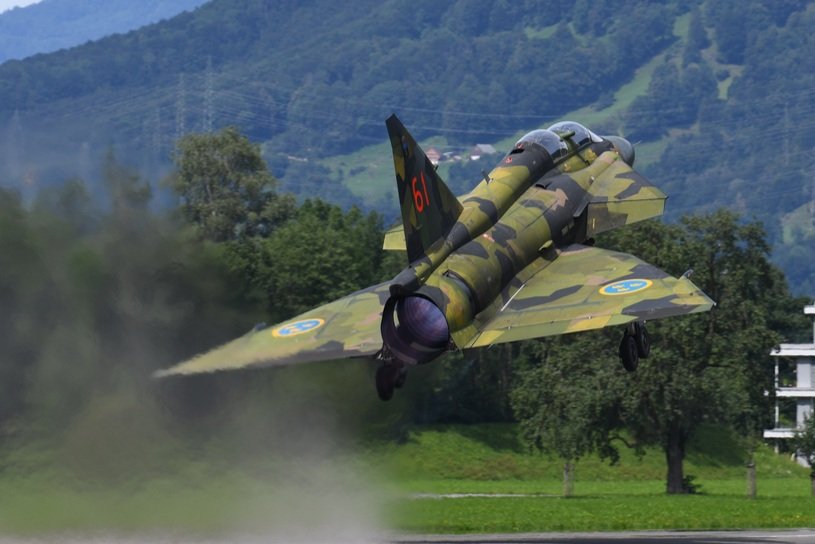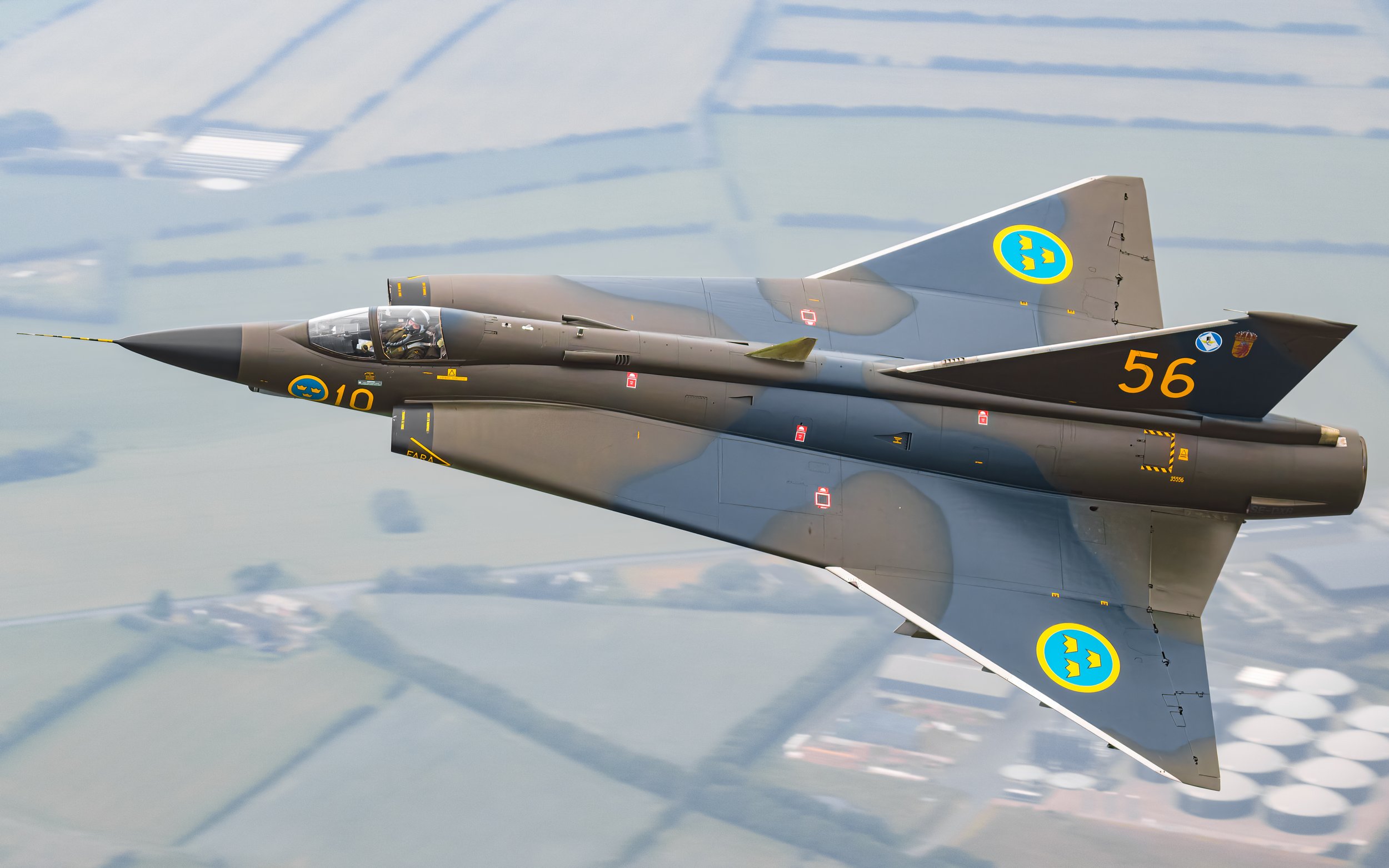Lansen SE-RMD
Year built
1959
Aircraft
J 32B Lansen
Base
F 7 Satenas
32542/SE-RMD was built in 1959 as J 32B and was delivered to the F1 “Västmanlands flygflottilj” that same year. On the 6th of July 1959, 32542 was transferred to the Test Establishment (FC) where it became the first J 32 to perform flights tests with Rb 24 Sidewinder and was also the first J 32 to fire this Swedish infrared homing air-to-air missile. It returned back to F1 on the 16th of June 1960 and was later transferred to the F21 “Norrbottens flygflottilj”. In its military career the 32542 served with the F12 “Kalmar Flygflottilj”, F4 “Jämtlands Flygflottilj”, F15 “Hälsinge Flygflottilj”, F3 “Östgöta Flygflottilj” and F13 “Östgöta Flygflottilj” before returning to F3 where it served until its retirement. For the last years in service with the Swedish Air Force 32542 had the sole task of taking high altitude air samples for research purposes in collaboration with the Swedish Radiation Safety Authority. In 2017 32542 received a civilian registration SE-RMD and is currently part of the Swedish Air Force Historic Flight still wearing its original paint scheme that was first applied at the beginning of the 1970s
| Back to Top |
Saab J 32B Lansen
The Saab 32 Lansen is a two-seat, transonic military aircraft designed and manufactured by Saab from 1955 to 1960 for the Swedish Air Force (Flygvapnet). Three principal variants of the Lansen were built for attack (A 32A), fighter (J 32B), and reconnaissance (S 32C). During its long operational life, the Saab 32 also served as an electronic warfare platform and target-tug aircraft.
The Saab 32 Lansen had a simple general arrangement, being one of the first aircraft in the world to be specifically developed to fly attack missions.
Its basic design features it was designed from came from Switzerland. It included drawings on Messerschmitts P.1101, P.1110, P.1111 and P.1112. SAAB's project manager Frid Wänström retrieved these secret papers from Switzerland to Sweden in 1945. The documents came from engineers from Messerschmitt who fled to Switzerland at the end of the Second World War. Among them were the engineer and aerodynamicist Hermann Behrbohm, who came to be part of Saab's core in the team around Saab 29 Tunnan and upcoming aircraft types like the Saab 32 Lansen and Saab 35 Draken.
From the outset, it was designed to provide good support for the installation of electronic warfare and weapons systems. The aircraft could be armed with a total of four 20 mm cannons, as well as wing pylons for various calibres of rockets and assorted bombs. The J 32 variant carried four 30 mm ADEN cannons while the A 32 ("A" stands for attack) had an armament of four 20 mm Bofors m/49 cannons hidden under flaps in the nose. The J 32 differed substantially from the other variant, Saab describing it as "to all intents a new aircraft", being fitted with a more powerful engine and newer armaments and different radar.
The Lansen's nose also contained the Ericsson mapping and navigation radar, the forward antenna of which was housed in a large blister fairing underneath the fuselage, directly forward of the main landing gear; this radar worked in conjunction with the Rb 04C anti-ship missile, one of the earliest cruise missiles in western service. The attack variant of the Lansen could carry up to two RB04 missiles, one underneath each wing. On the reconnaissance variant of the Lansen, up to six cameras can be installed in the place of the four cannon, the camera bodies required the installation of chin blisters on the upper fuselage of the nose; the Lansen could also carry up to 12 M62 flash bombs for night photography.
The fuselage of the Lansen was produced with a sleek, streamlined airframe with clean lines. The Lansen was the first aircraft on which every mould line had been a result of mathematical calculation, made possible via an early application of computer technology. The wing had a 10 per cent laminar profile and a 35° sweep. hydraulically-boosted ailerons and large Fowler flaps on the wings comprised the main flight control surfaces, as did the hydraulically-assisted elevators of the powered tailplane; a total of four airbrakes were also present on the sides of the rear fuselage. The Lansen had a tricycle undercarriage with a single wheel on all of the landing gear. Other wing features include one-section stall fences on the outer-thirds of the wing, a pitot tube on the right wingtip, and three underwing hardpoints. To test the 35° sweepback design of the Lansen's wing, a half-scale wing was mounted on a Saab Safir, designated Saab 202 Safir.
The Lansen was powered by an afterburning Svenska Flygmotor RM5 turbojet engine, which was a license-produced Rolls-Royce Avon RA.3/Mk.109 engine manufactured by Svenska Flygmotor. For easy maintenance access to the engine, the aircraft's entire aft fuselage was detachable. The air intakes for the engine were located just forwards and above the wing. The two-man pilot and navigator crew were contained in a pressurised cockpit equipped with a single-piece clamshell canopy; a second windscreen separates the cockpit in between the pilot and navigator to protect the latter in case of inadvertent jettisoning of the canopy.
| Back to Top |




| Back to Top |














